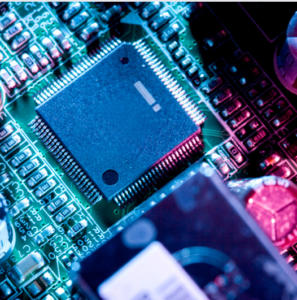
The importance of the processor in a smartphone cannot be overemphasized. A smartphone’s processor, also known as an SOC or System On Chip, is the driving and maintenance force for anything that takes place on your phone. Basically, your processor is as crucial to your smartphone as your brain is to you. It determines the performance, battery life, and features of the phone.
The SOC is the main computing unit of a mobile device. It is the driving force behind every action your phone takes and makes sure that everything is done correctly. Every smartphone chipset or SOC consists of multiple parts, not just a CPU.
The smartphone market has an abundance of processors from different manufacturers, like the Snapdragon from Qualcomm, Exynos from Samsung, and the Bionic processor from Apple.
Components of a Smartphone processor or SOC
Central Processing Units (CPU): The CPU is responsible for all the main functions. It is the brain of the SOC. It controls all other components and executes instructions.
Graphics processing unit (GPU): The GPU is responsible for rendering graphics. It is used for tasks such as gaming, video playback, and image processing.
Memory controller: The memory controller manages the memory on the SOC. It determines how much memory is available and how it is used.
Modem: The modem is responsible for communication. It allows the SOC to connect to cellular networks and Wi-Fi.
Image signal processor (ISP): The ISP is responsible for processing images from the camera. It converts the raw image data into a format that can be displayed on the screen.
Digital signal processor (DSP): The DSP is responsible for processing digital signals. It is used for tasks such as audio processing and speech recognition.
Neural processing unit (NPU): The NPU is responsible for processing neural networks. It is used for tasks such as machine learning and artificial intelligence.
What Are Cores in a Smartphone Processor?
A core is a physical processor inside a CPU. It is the “brain” of the CPU and is responsible for executing instructions. The more cores a CPU has, the more instructions it can execute at the same time. This can lead to improved performance, especially for tasks that can be parallelized.
For example, a dual-core CPU can execute two instructions at the same time, while a quad-core CPU can execute four instructions at the same time. This means that a quad-core CPU can potentially be twice as fast as a dual-core CPU for tasks that can be parallelized. Do note that not all tasks can be parallelized.
How Do Smartphone Processors and SOC Work?
Processors work hand in hand with a device’s operating system (OS). The OS controls the processor by giving it instructions to carry out tasks such as taking a picture, opening an app, etc. Once the processor receives instructions from the operating system, it executes said instructions by sending electrical signals to other components of the phone.
There are a few things that determine a processor’s performance:
Clock speed: This basically means how fast each processor core can execute tasks or instructions. The higher the clock speed, the faster the execution time.
Number and Type of Cores: Another thing that determines a processor’s performance is the number and type of cores it has. A processor with more cores can execute multiple tasks at the same time.
Also, there are three types of cores: prime core, performance core, and efficiency core. These specialized cores focus on carrying out certain tasks, as their name implies.
So the number of cores divided by the types of cores determines a processor’s performance.
Factors That Affect A Processor’s Performance
Here are some factors that can affect a smartphone’s processor performance:
App Load
The performance of a smartphone’s processor can be affected by quite a number of things. A powerful processor like the latest Snapdragon 8 Gen 2 from Qualcomm can take and run almost any task or app you throw at it smoothly. This is unlike a less powerful processor like the Snapdragon 732G, which can run low to mid-resource apps and tasks fairly smoothly but starts to struggle once you move on to more demanding tasks. In essence, one of the things that affect a smartphone’s SOC processor performance is the app and processor strength.
As I said earlier, high-end smartphone processors can run almost all apps or tasks smoothly. So heavy resource-hungry apps like high-graphics games can affect a processor’s performance, especially after prolonged running. This even leads to a phone overheating. So apps can affect a processor’s performance.
Heat
Heat is the worst enemy of a processor and affects it in a lot of ways. For one, when a processor gets too hot, it may throttle its performance to prevent itself from overheating. This means that the processor will run slower. If the processor fails to get the heat under control, thereby overheating, it can shut down your phone to prevent damage. And it doesn’t stop there; this causes your phone to burn through its battery much faster.
Age
Like many other things, smartphone processors and SOCs experience wear and tear. Over time, dust buildup and damage from things like falls start to take a toll on the performance of a processor.






